(David Herbert Lawrence)
English text by Bee Jensen 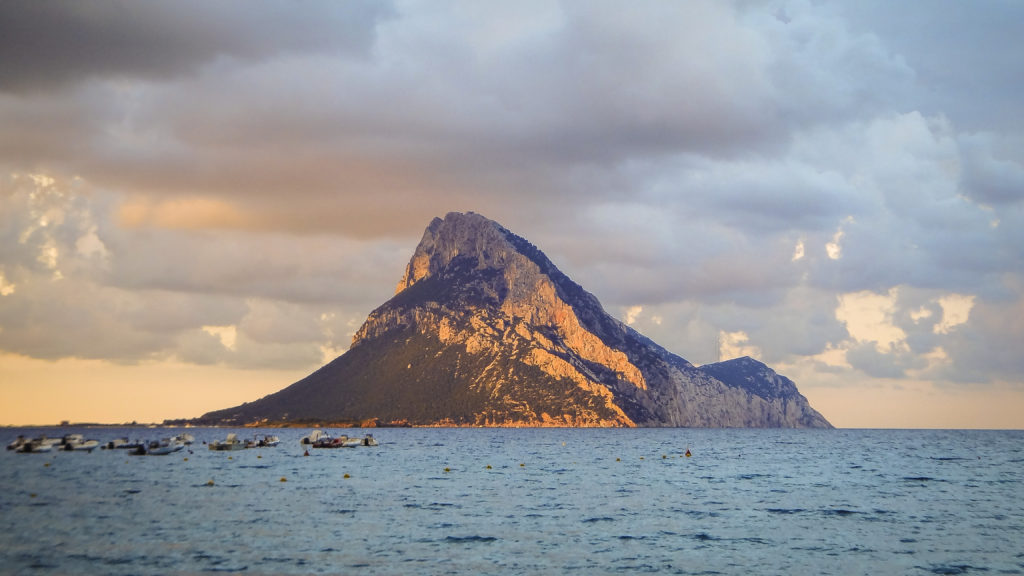
The Sunset and the Queen
It is an autumn afternoon at Porto Taverna, a beautiful beach in front of the Queen as I like to call the Tavolara, that I watch her hills slowly turn pink. Some clouds which looks like a hat are positioned above Punta Cannone. They are so puffed and oddly shaped that the image in front of me looks like a naive picture. “What do you think about the weather for tomorrow?” – Roberto, my fellow adventurer is not worried. For him that question is as if it is a confirmation of what he already knows. He is an expert, but consulting with those who go to sea is in his mindset. “Good, very good. At most we will have a bit of breeze from the South East, nothing more”- I answer like a seadog. The memory of the circumnavigation two years earlier shifts my thoughts to the route rather than the weather forecast. I do not want to spend hours observing that island without being able to land and allow myself a couple of hours of rest. “I think it’s best to go South, to go to Capo Coda Cavallo, go up along Molara and stop at the pools. “Ok, I think that’s best” – my friend replies. The sun now going down behind us first colours the Queen blue and then grey, before it goes down into the sea of Gallura. I turn to the North and see the small silhouette of the wreck. I am attracted to The Chrisso and it is my fixed point since I saw this stretch of sea for the first time. It represents what every man going to sea wants to avoid. A shipwreck, because this is what it is, is a warning to everyone. Even if in this case there were no human victims, that iron mass is there to remind you of safety at sea – better than many courses will. The human limit is to believe that you can fight natural forces at any cost, but sometimes it crashes and hurts. The history of that ship, or rather of the last hours of navigation, take us back to 1974 when on the last night of the year it gets stuck after having dropped the moorings in front of Punta la Greca in a depth of three to five meters. A ship constructed in 1958, had changed its name four times when tradition say that you should not change ships’s names because it brings bad luck. She stayed there a long time, unable to move and even had a caretaker on board, until she was sold to a recovery company that never got her off those rocks. After many years of storms the ship is now broken in two sections and one of these sections is still visible.
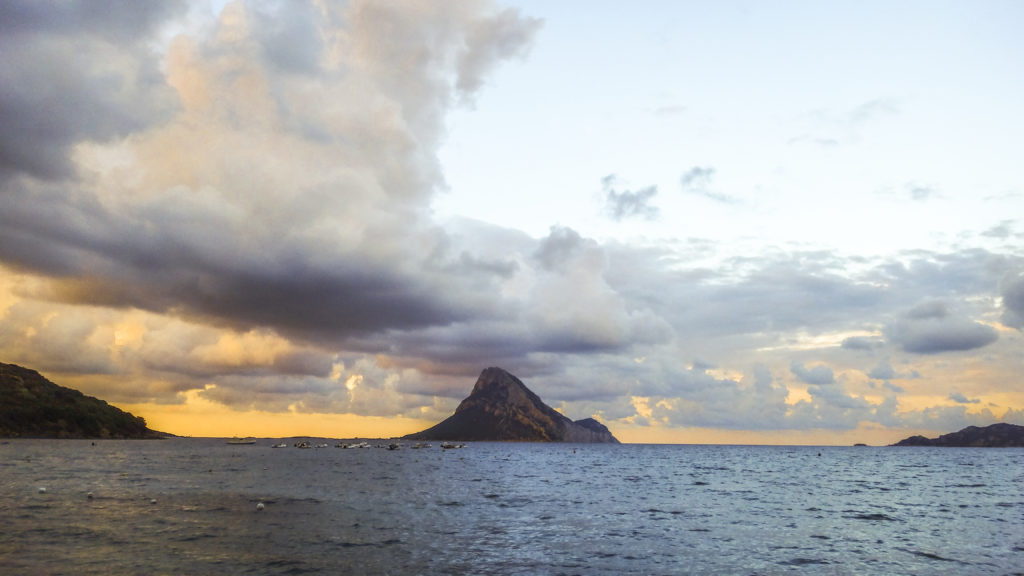
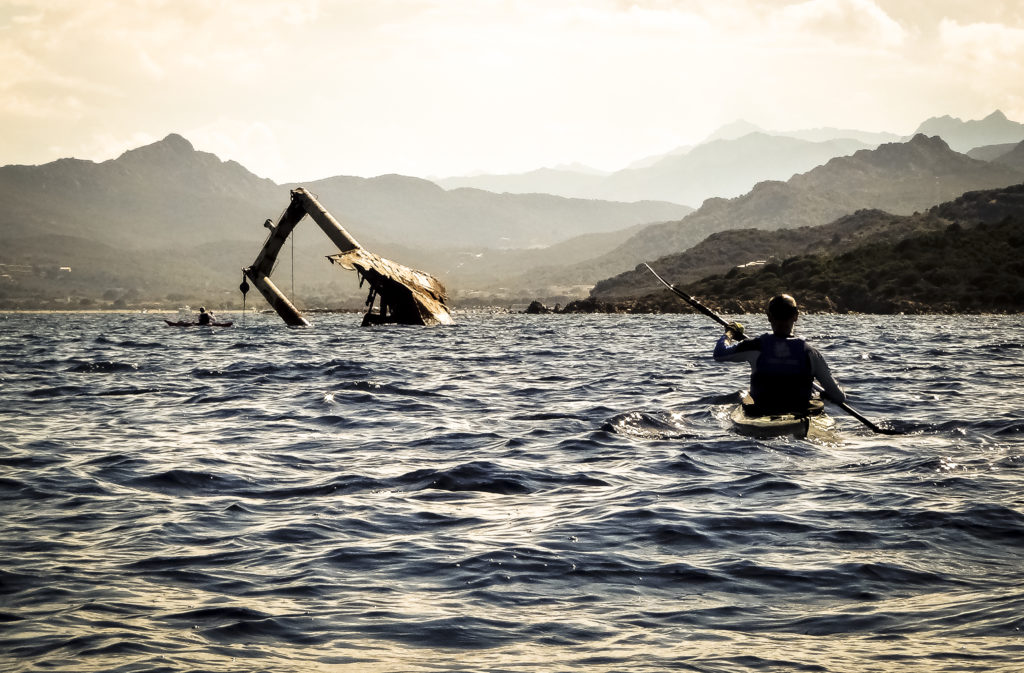
Stories of the sea, men and tragedies
We return to our hotel in the centre of Porto San Paolo. The beginning of autumn makes this little centre a bit melancholic. A few tourists and locals who walk hastily by due to the cold humid air of the evening. A few months before I had gone to Tavolara for the International Film Festival and these streets had been swarming with people. An excessive contrast I think, one I have never liked. It reminds me of the lyrics of a song about the sea in the winter, it’s almost hard to grasp how different the sea is in the winter months. “Then, we go?” – Roberto, impatient to go eat, distracts me from my thoughts. In front of a cup of tea I start to search on my tablet. I’m looking for information on Chrisso and I come across different sites that mention wrecks. Apart from the Chrisso and other ships where the crews were lucky, the list reveals stories of unfortunate men that the sea swallowed. Not only ships but also aircrafts that still lie at the bottom of the deep sea. It is evident that most of these tragedies happened during the last war. Where the gunfire and the bombs failed, there was always the sea to complete the killing of men. This is the case of the KT 12, a German transport ship with crew. One morning in June 1943 in front of the Gulf of Orosei they were hit by the torpedoes from an English submarine. The Safari her name was, the black beast of the Axis convoys in this area, boasting an incredible track record of sinking ships. That day, unfortunately for the crew of the KT, the ship transported fuel. The explosions that they had on board left almost no escape for anyone. Those who jumped off ship, did it in a sea full of flames and got severely burned. But here in Tavolara, beyond the Chrisso, after almost seventy years the almost intact wreck of the P311 Tuthankamen was found. The discovery was made in 2016 by a deep sea diver, Massimo Bondone at a depth of about ninety meters.The submarine carried two “Chariots” (slow-running torpedoes), attacked some of our battle ships in the base of La Maddalena. The submarine came across a minefield and sank. The hull, as photograped by Bondone, is almost intact except for the bow which was ruined by the explosion. This confirms that for seventy years the wreck has been the last resting place for the remains of the 71 crew members. They are all stories of the sea, war and sites that we must treat with the respect they deserve.
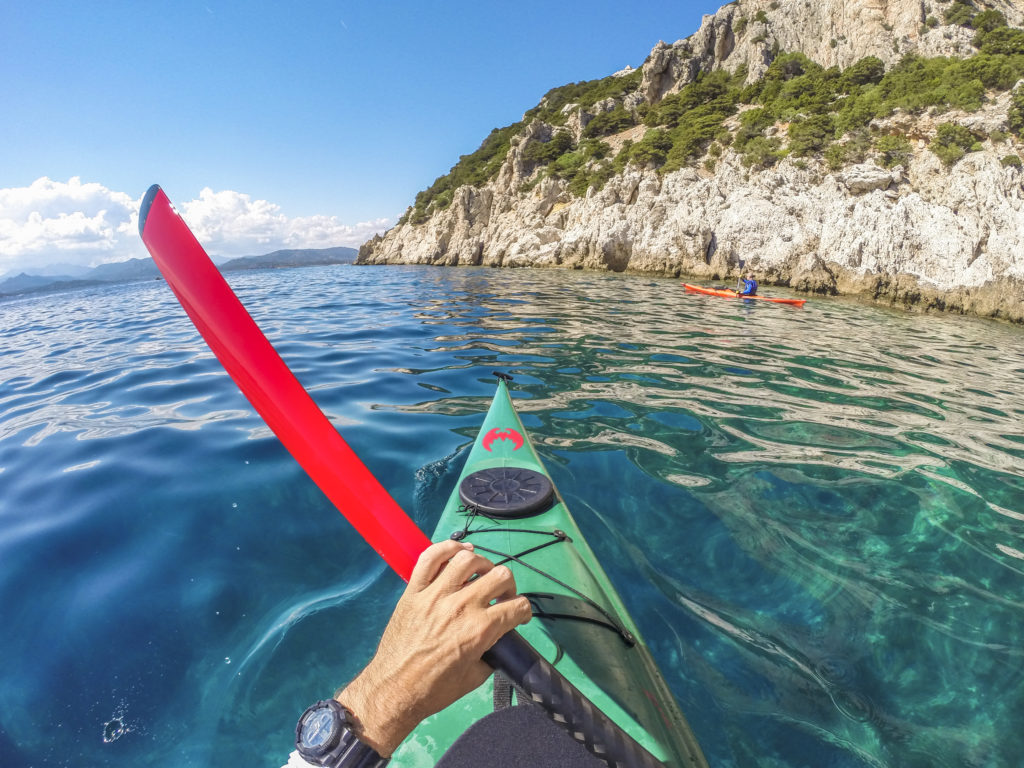
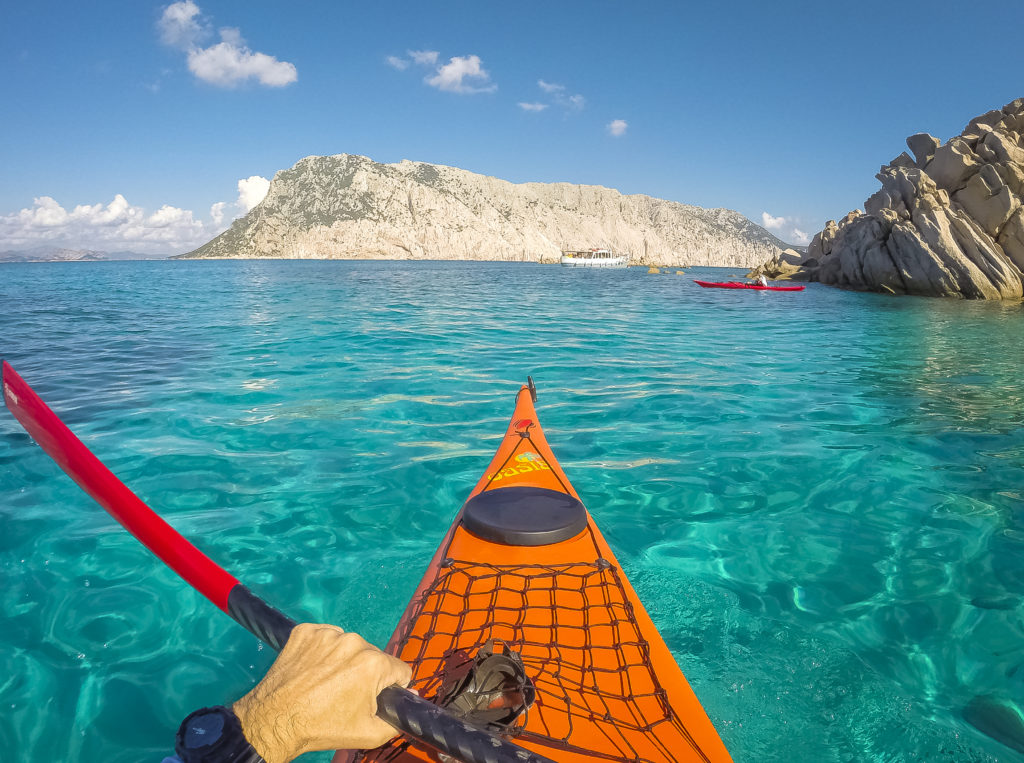
The AMP (Area Marina Protetta) of Capo Coda Cavallo and Tavolara
We arrive at Porto Taverna according to the time schedule. The sun is still low on the horizon and the sea is flat. We head South to a deserted Cala Girgolu. The seabed is incredibly visible through the water, but this does not surprise me as much as it once did. Of course, I am excited to see this again and still feel ecstatic about this beauty. But familiarity leads us to see things differently. I notice it in the eyes of my new adventure companions who are crossing this stretch of sea for the first time. They have happy faces and from the moment we launched our kayaks into the water they make me smile and be happy about the choice for our weekend at sea. We are now inside a protected area, the Marine Protected Area of Tavolara Punta Coda Cavallo. Established in 1997, it includes about 15,000 hectares of sea and is part of the coastal territories of the municipalities of Loiri Porto San Paolo, Olbia and San Teodoro. Due to its value it obtained the recognition of Specially Protected Area of Mediterranean Importance in 2007. These were important steps forward that allowed the managing body to both take of and protect the area. Also for the tourist industry that over the last years has become a steady base for the local economy. And there is no doubt that institutions like this are to be put on the plan for many other areas that has suffered under the crisis over the recent years. Our kayaks continue their route towards the South and a succession of breathtaking landscapes flow in front of the delighted paddlers. Palaeozoic granites with their rounded shapes are surrounded by a lush Mediterranean vegetation of gigantic juniper specimens while a light breeze begins to blow from the South East. A series of little coves before the beautiful Cala Suaraccia and our first goal Capo Coda Cavallo where we stop for a short break.
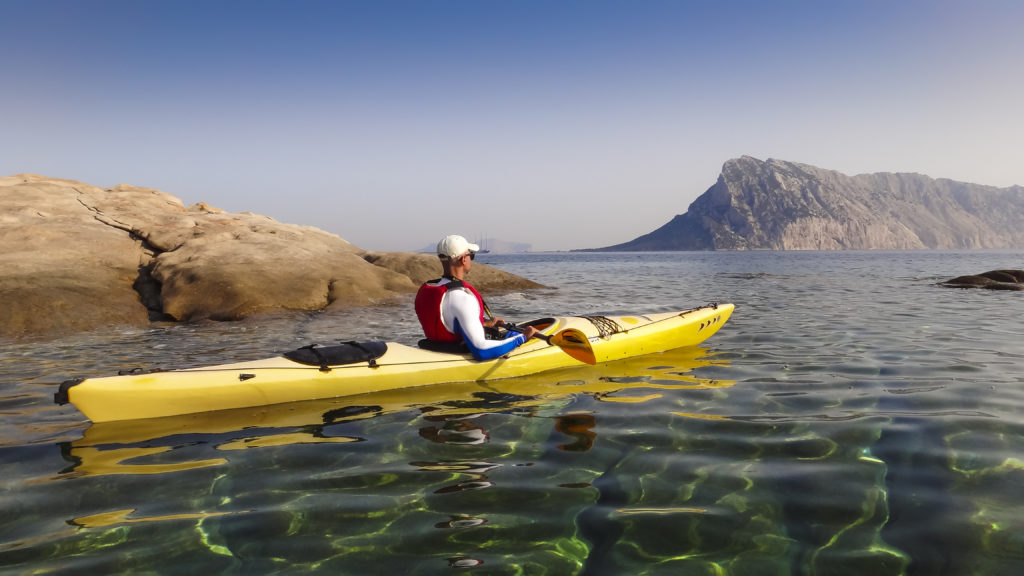
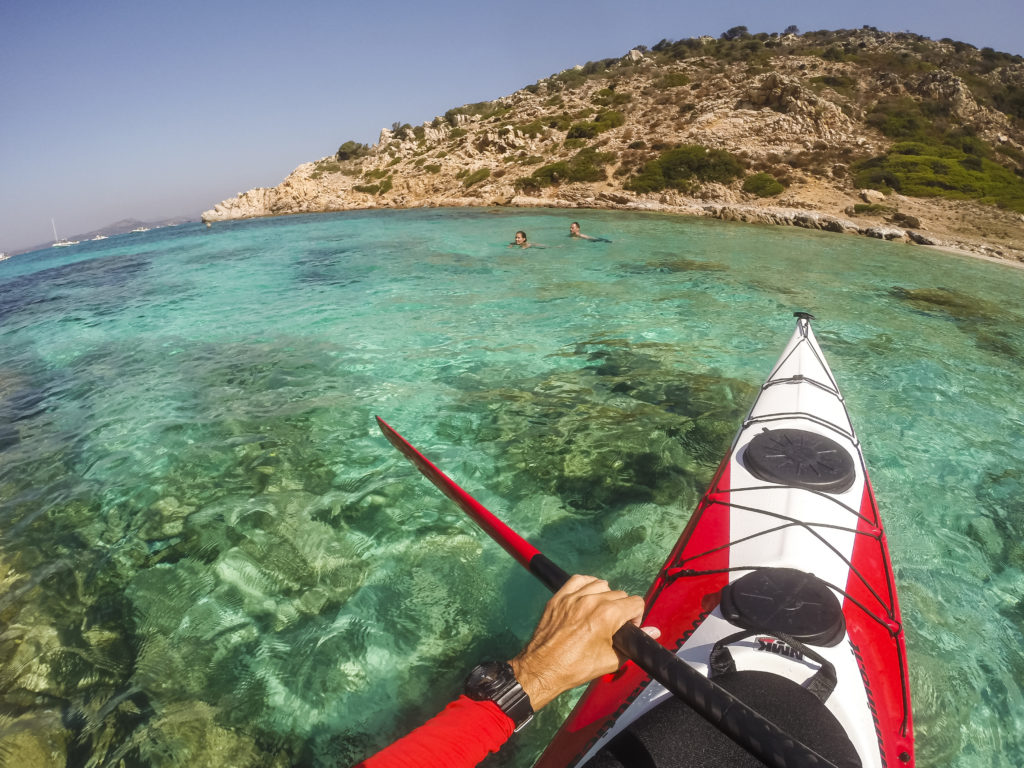
Molara, the island of the goats and the exiled Pope
It is known as the island of mirrors, the water is so clear that some areas have been renamed, such as “the pools”. Places that in the summer months, especially July and August, are packed with dinghies and other boats. Molara is the smaller, but different; sister of the Queen. The dazzling limestone of the dragon-shaped island is not present in Molara. From a geological point of view it is similar to the coastal area and to the granite inland. The private island owned by the Tamponi family has been deserted for a long time. But up until the sixties there was a farm in which they had goats and cattle and produced cheese. Its ruins are still visible today. As we pass along the West coast some shy goats look over the Mediterranean shrubs, jumping from rock to rock until we disappear. The island, although not as famous as Tavolara, is of importance for the activity of the AMP (Area Marina Protetta) for its environmental value. There is spring water here and the Corso seagull, a rare and smaller species of the seagull, has been nesting for years on Molarotto, the smallest of the islands until some years ago. With the bulk of the Queen in front of me, I also remember reading some stories about Pope Pontian who is said to have been sent to exile on Molara. The are some remains of a small medieval church named San Ponziano that might prove this, but conflicting theories have followed one another in recent years. Marco Agostino Amucano, an archaeologist from Olbia, partly disassemble the previous beliefs of a pope condemned to forced labor on this island. His opinion, as stated in an article which appeared in a Sardinian newspaper, is that the island the pope stayed on, is one in the Maddalena Archipelago and not here in this area. From the Liber Pontificalis, the book of the Popes, it is written that Ponziano was exiled on the Insula Bucina, which, according to Amucano, is very likely the La Maddalena Archipelago. These island were called Bucinarieal since the 13th century. It is however certain that he died in 235 D.C. for the anguish after abdication in order for his successor to be elected. “We stop at the pools?” – Roberto and Nicola are already heading towards the East for a stop in the beautiful and deserted Cala Spagnola while I still watch the white mass of the Queen in front of me and some goats that scrutinise me from the rocks of Molara.

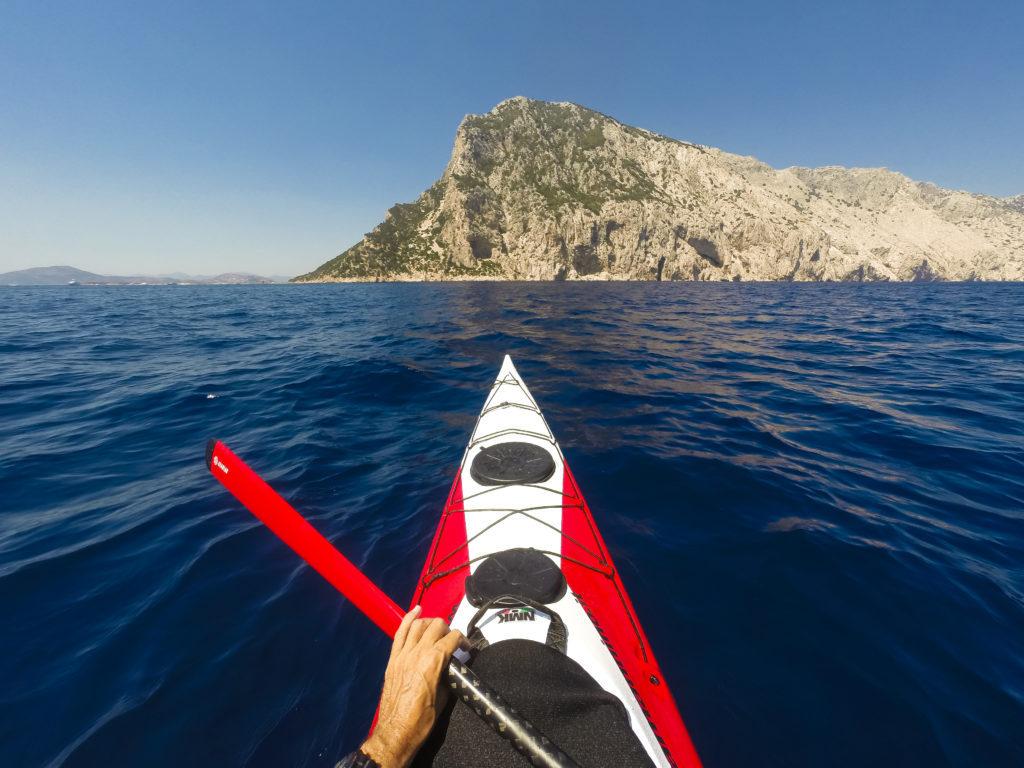
The Kingdom of Tavolara
In July 2014 I travelled this stretch in front of Cala di Levante with a strong crosswind. The waves were not an issue because the mistral wind here does not cause waves, but the gusts were very strong and it seemed that sometimes I could lose control of my kayak. The few times I was able to turn to my right, I saw the bay that can not be accessed. Tavolara is half owned by the military and minutes before we were told off for being too close to the coast. I thought it was not worth it to circumnavigate this island and only observe it for the sea without the possibility to land. Today, apart from a light breeze from the East, the sea is on our side and we have not even planned a circumnavigation of the island. From Molara you can already see the houses and the small port. “Let’s go to Tonino to eat?” – Roberto in the mood for food reminds me of the last king of Tavolara. His story is something between legend and reality and has fascinated generations of visitors to this place. The Bertoleoni family settled here after leaving Liguria at the end of 1700, passing first to Corsica then to the Maddalena archipelago and finally arriving at a deserted Tavolara, only inhabited by a colony of wild goats. The Bertoleoni, the only inhabitants of the place and without any attestation of ownership, tried to obtain the sovereignty of this place which for years was under the Savoia (the kings of Italy). When in 1836 Carlo Alberto landed on the island with his royal yacht in search of the gold toothed goats he presented himself with “I am the King of Sardinia”, to which Paolo Bertoleoni replied “I am the king of Tavolara”. Thereby creating a legend of the meeting of the two kings. Since then they remained friends spending days hunting together. But how can we have a Kingdom in this small and remote place? The State Property, probably due to the absence of an act of property, evicted the family from the island. But an intervention of Carlo Alberto prevented this. A few days later he declared an edict that appointed Paolo Bertoleoni as first sovereign and owner of the island of Tavolara. Today the family owns about 70 of the 700 hectares, which among other things, are occupied for the most part by a military base. The Tonino restaurant, the last king of Tavolara, is a favoured destination for those who want to feel and touch this incredible story. Years ago, during an interview, he defined himself as the poorest king in the world but with a heavenly kingdom. And I can believe him by observing these crags from below on crystal clear water while a smell of roasted fish comes from the kitchens of the almost deserted beach restaurant. I turn left over the Spalmatore di Terra beach and try to see the Chrisso. I look at it in the distance but for now it stays there waiting for me. We stop here to enjoy a dish of Tonino and maybe listen to new stories about his kingdom.

Our video shows the visit of 2014 when the weather conditions were bad
[embedyt] https://www.youtube.com/watch?v=dgr7D11oNUQ[/embedyt]
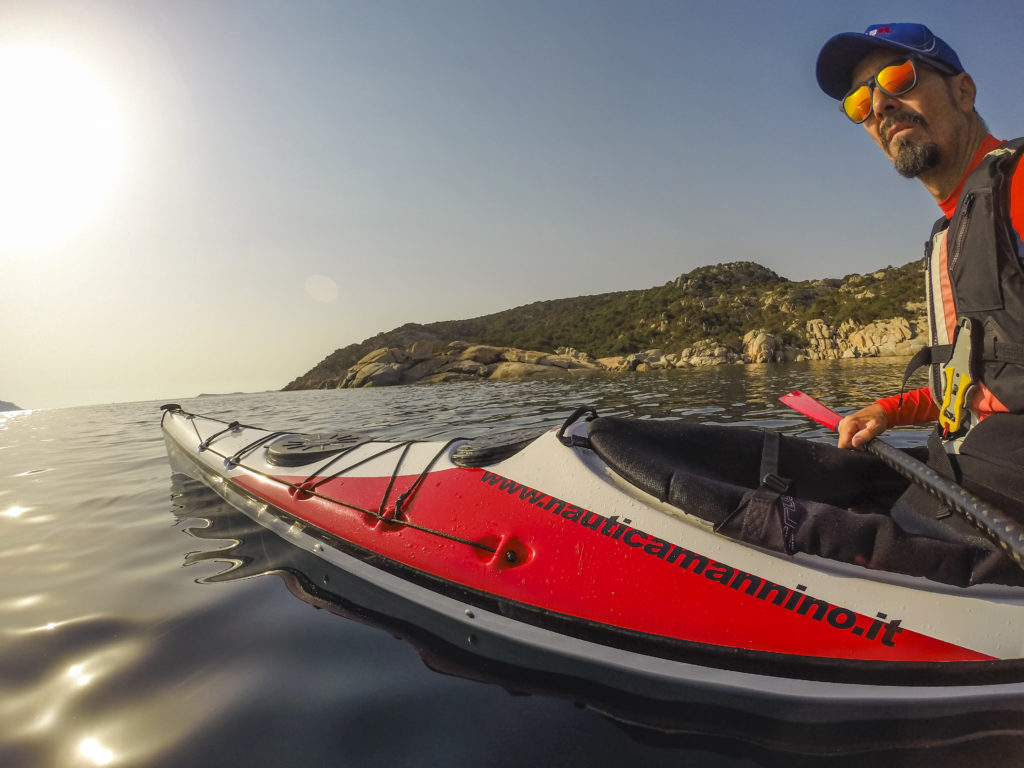
Equipment
Seakayak Evolution 2.0 by Nautica Mannino
Paddles AKIAK, KAYAKID e NUKILIK della Gearlab Paddles
Sunglasses Sungod
[mappress mapid=”3″; map alignment=”center”]